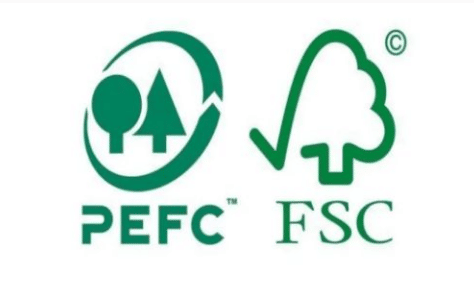FSC and PEFC are both European initiated certification. However, PEFC requires stricter requirements. PEFC requires that wood and lumber are imported from abroad. For FSC certification, wood and lumber can be domestic manufacturers and forest farms that have obtained FSC certification qualification.

The Difference Between PEFC and FSC
FSC and PEFC are both European initiated certification. However, PEFC requires stricter requirements. PEFC requires that wood and lumber are imported from abroad. For FSC, wood and lumber can be domestic manufacturers and forest farms that have obtained FSC qualification. Relatively speaking, FSC requires looseness. Therefore, there are many points for various manufacturers to do FSC.
PEFC: PEFC Certification Council (program for the endorsement of forest certification schemes) is an independent, non-profit and non-governmental organization. It was established in 1999 to promote sustainable forest management through third-party independent certification. PEFC provides a safeguard mechanism for buyers of wood and paper products that promote sustainable forest management.
FSC: The Forest Management Committee (FSC) is a system owned by stakeholders, whose purpose is to promote responsible global forest management. It provides standard setting, trademark assurance, accreditation services and market access for companies and organizations interested in responsible forests. As of January 2006, FSC has recognized 15 certification bodies, and enterprises that have passed the certification have the right to use the FSC mark.
Cost Analysis of FSC
(1) Direct expenses: The expenses of the certification itself, such as FSC evaluation, audit expenses, AAF membership fees, salaries and travel expenses of certification personnel, etc. these expenses are fixed.
(2) Indirect costs: Additional costs required to meet the certification standards. Such as the cost of adjusting the long-term forest management plan and forest operation procedures, improving the forest management level, training the production personnel, and the labor hours and documents required to meet the requirements of FSC.
The cost of FSC depends on the following factors:
① Certified area. Generally speaking, the larger the forest land area, the higher the certification fee. However, the certification fee does not increase in a positive proportion. Generally, the larger the forest land area applied for certification, the less the average certification fee per unit forest land area. Therefore, the forester should include all eligible forest land as much as possible at one time to reduce the certification cost. Do not separate certification in small pieces.
② Whether the distribution of positions is scattered or concentrated. The more scattered the woodland, the more places the auditors need to see, and the more the distance and time will be, so the cost will naturally be higher.
③ The distance of the certification company. If the certification body is far away, the travel expenses of the certification personnel to the site are naturally much higher. At present, there is no permanent establishment of certification companies in China, and only some branches of certification companies in Asian countries are relatively recent.
④ Number of foreign experts in the certification team. The foreign experts in the certification team mainly come from developed countries such as Europe and America. Their wages are several orders of magnitude higher, and their transportation costs from abroad to the forest site are also much higher. Domestic experts are paid much less. Therefore, one or two foreign experts in the certification team have a great impact on the certification fee.
⑤ The profit the certification company expects to earn. The gap in this respect can only be drawn by comparing various aspects.
Use of FSC Certification
Forest Stewardship Council certification includes forest management certification (FM) and chain of custody certification (COC). FM is the certification of the enterprise’s forest management, while COC is the certification of the whole chain of the enterprise from log transportation, processing, circulation to consumer evaluation. These two types of certification cover the whole process of wood product production. Therefore, FSC forest certification is the whole process certification of wood products. FSC label is also called “green label”, “environmental label” or “ecological label”.
Once a wood or furniture manufacturer attaches the label of FSC forest certification, it is equivalent to obtaining the “pass” in the global forest market. The enterprises have the signboard of FSC forest certification, which indicates that their timber and its products are from well managed forests. Consumers are more clear about the source of the wood and its products market, and it is easy to identify.
The EU stipulates that foreign enterprises that have not obtained the FSC forest certification will not enjoy the tariff preference of the EU. In order to promote FSC forest certification, the EU has issued a “trade incentive arrangement” policy, that is, if the products exported to EU countries include forest products, and their production processes meet the requirements of the EU, they can enjoy a certain proportion of tariff preferences.
If an enterprise can affix the FSC label, it can apply to the Customs for a considerable tariff discount.
FSC Function
1. FSC is a system owned by stakeholders, whose purpose is to promote responsible global forest management.
2. It recognizes independent third-party organizations that can certify forest management units and forest product processing enterprises according to FSC standards.
3. Its trademark provides international recognition for organizations that support responsible forest management growth.
4. Its product labels allow global consumers to identify products that support responsible forest management growth in the world.